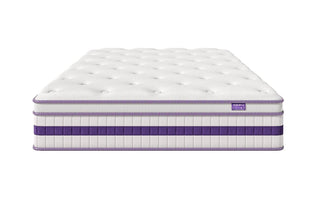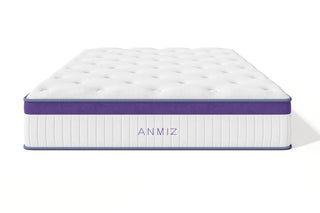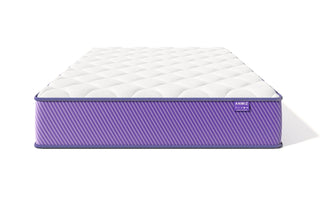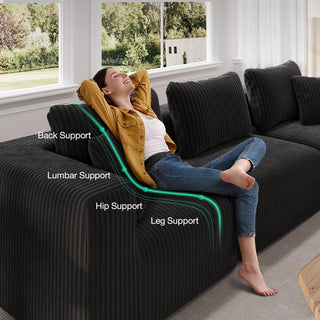According to the Cleveland Clinic, an estimated 70 million Americans are affected by sleep disorders — which accounts for roughly 20% of the U.S. population. These sleep-related conditions can range from mild to severe, but they may lead to serious consequences, since sleep is an essential process for maintaining both physical and mental health.
Below, we’ll explain what sleep disorders are, explore potential causes, review signs that may indicate you are experiencing one, and provide information about several of the most common sleep conditions. Please keep in mind that this article is not a substitute for professional medical guidance. If you suspect you may have a sleep disorder, consult a healthcare provider for an accurate diagnosis and appropriate treatment.
What is a Sleep Disorder?
Sleep disorders and sleep-related conditions involve disruptions in both the quantity and quality of sleep a person receives. These disorders can cause daytime fatigue, reduced alertness, and a diminished ability to carry out everyday tasks. As a result, they can negatively affect a person’s work performance, social interactions, and overall wellbeing.
What Causes a Sleep Disorder?
There is no single cause behind sleep disorders. A particular sleep condition may stem from a variety of factors, such as physical health concerns, nighttime or irregular work schedules, or mental health challenges. Below is a list of common causes associated with sleep disorders:
- Anxiety and depression
- Medications
- Nighttime shift work
- Alcohol and caffeine usage in the hours leading up to bed
- Chronic pain
- Respiratory problems
How to Tell If You Have a Sleep Disorder
If you are experiencing excessive daytime sleepiness, recurrent difficulty falling asleep or staying asleep, or even periods where you are unable to sleep at all, you may be dealing with a sleep disorder. If your lack of restful sleep is beginning to interfere with your daily functioning, it is important to consult a medical professional for an accurate diagnosis and appropriate treatment.
Types of Sleep Disorders
According to the Cleveland Clinic, there are roughly 80 different types of sleep disorders. While we won’t cover all of them here, we will focus on the most common conditions. The five most prevalent sleep disorders are insomnia, sleep apnea, narcolepsy, restless leg syndrome, and REM sleep behavior disorder.
Insomnia
Insomnia is a common sleep disorder that makes it difficult to fall asleep and/or stay asleep. People dealing with insomnia may feel as though they are barely sleeping at all. This condition can lead to daytime exhaustion and excessive sleepiness. It may also influence mood, contributing to increased irritability, anxiety, or depressive feelings. These emotional and physical effects can interfere with daily responsibilities and hinder overall performance at work, school, and home.

Insomnia can be classified as either acute or chronic. Acute insomnia lasts less than three months and is often triggered by stressful events, trauma, jet lag, or sudden changes in routine or schedule. Chronic insomnia, however, persists for three months or longer. This form is more commonly associated with underlying medical conditions, medication use, or ongoing stress, and typically requires evaluation and diagnosis by a healthcare professional.
Sleep Apnea
Sleep apnea is a condition in which a person experiences intermittent pauses in breathing throughout the night. This disorder can be dangerous, as disrupted breathing may reduce oxygen levels supplied to the brain. The most recognizable symptoms of sleep apnea include loud snoring and waking up feeling unrested or fatigued. If you share a bed with someone, they may observe snoring, gasping for air, or moments where breathing appears to stop entirely.

There are three types of sleep apnea:
- Obstructive sleep apnea – This is the most common form and occurs when the airway becomes blocked during sleep, typically due to the relaxation of the throat muscles.
- Central sleep apnea – This type develops when the brain fails to send proper signals to the body to breathe during sleep. It is much less common than obstructive sleep apnea.
- Mixed sleep apnea – This form combines characteristics of both obstructive sleep apnea and central sleep apnea, meaning both airway blockage and signal disruption contribute to the breathing interruptions.
Sleep Deprivation
Rather than being classified as a disorder, sleep deprivation simply refers to not getting enough sleep. Most adults require 7 to 9 hours of sleep each night, so consistently getting fewer hours may indicate that you are sleep deprived. Sleep deprivation can result in daytime fatigue, reduced performance, lowered immune system function, and a wide variety of additional health concerns. It can also increase the risk of more serious medical conditions, including heart disease, diabetes, stroke, and depression.

Sleep deprivation can occur for many reasons, such as the presence of a sleep disorder, illness, changes to a work schedule, or stress. Other common contributors include caring for a new baby, since infants have very different sleep patterns than adults, and aging, as it can become more difficult to maintain uninterrupted sleep as we grow older.
Sleep Paralysis
Sleep paralysis is actually a normal component of REM sleep, but problems arise when it occurs outside that stage. In these instances, a person may feel mentally awake while their body remains immobile. Sleep paralysis may also be accompanied by hallucinations that seem dreamlike, which can feel alarming or distressing. Episodes may last only a few seconds, causing minimal concern, or extend for several minutes, which can lead to anxiety or even a sense of panic.
Although the exact cause of sleep paralysis is not fully understood, it has been associated with several other conditions, including insomnia, narcolepsy, PTSD, and anxiety disorders. According to the NHS, ways to help reduce the likelihood of sleep paralysis include maintaining healthy sleep hygiene and avoiding alcohol and caffeine prior to bedtime.
Parasomnias
According to the Cleveland Clinic, parasomnias are sleep disorders characterized by abnormal physical behaviors during sleep, such as movement or talking. Parasomnias can occur either during sleep or while a person is waking up. When they happen during sleep, the individual may appear awake, since they may show seemingly conscious behaviors, including speaking or moving, even though they are not fully aware.
Sleepwalking
Sleepwalking is considered a type of parasomnia because it occurs while an individual is asleep, yet they may appear to be awake. Sleepwalking takes place during non-REM sleep, most commonly in the deepest stage, known as the N3 stage. This behavior can be triggered by several factors, including sleep deprivation, stress, and changes in sleep schedules. Certain conditions may also increase the likelihood of sleepwalking, such as substance abuse, restless leg syndrome, and the use of psychiatric medications. Additionally, children are generally more prone to sleepwalking than adults.
Night Terrors
Night terrors are a type of parasomnia in which a person awakens feeling intensely frightened. While they may resemble nightmares, it’s important to note that nightmares occur during REM sleep, whereas night terrors take place during non-REM sleep. Much like sleepwalking, the exact cause of night terrors remains unclear. However, experts believe that stressful events, fever, and lack of sleep may play a role in triggering these episodes. Night terrors are sometimes associated with sleepwalking and are most commonly seen in children.
Narcolepsy
It is estimated that 135,000 to 200,000 people in the United States are affected by narcolepsy. Narcolepsy is a sleep disorder in which the brain has difficulty properly regulating the sleep-wake cycle. Common symptoms include cataplexy—a sudden episode of muscle weakness—and excessive daytime sleepiness. Cataplexy may appear as though a person is unexpectedly falling asleep during the day, which is the behavior most often associated with narcolepsy in popular understanding.

There are two types of narcolepsy:
Type 1 – Individuals experience both cataplexy and excessive daytime sleepiness. They also have low levels of the brain chemical hypocretin, a neuropeptide that plays an essential role in sleep regulation.
Type 2 – These individuals experience excessive daytime sleepiness but do not have cataplexy and maintain normal hypocretin levels.
Circadian Rhythm Sleep Disorder
Circadian Rhythm Sleep Disorder refers to a group of sleep disorders in which the body’s sleep-wake cycle becomes misaligned. Individuals may have difficulty falling asleep, staying asleep, or may wake up too early and be unable to return to sleep. These disorders can arise from several causes, including jet lag, shift work, chronic insomnia, brain injury, certain medications, and poor sleep hygiene.
Symptoms of Circadian Rhythm Sleep Disorders are similar to those seen in many other sleep-related conditions. They may include excessive daytime sleepiness, depressive symptoms, difficulty waking up or falling asleep, reduced work performance, and strain on social relationships. Treatment options for these disorders may involve behavioral therapy, bright light therapy, and various medications.
Shift Work Sleep Disorder
Shift Work Sleep Disorder is a type of Circadian Rhythm Sleep Disorder that affects individuals who work non-traditional schedules, such as night shifts, early morning shifts, or rotating shifts. These irregular sleep patterns disrupt the body’s natural sleep-wake cycle, which can lead to reduced sleep quality and excessive daytime sleepiness. The Cleveland Clinic estimates that 10 to 40 percent of shift workers experience this condition.
Symptoms of Shift Work Sleep Disorder often include daytime sleepiness, insomnia, low energy, difficulty concentrating, depressive symptoms, and strain in social relationships. This disorder can also pose safety risks, as affected workers may have a harder time maintaining focus, potentially resulting in reduced job performance and increased risk of accidents.
Although Shift Work Sleep Disorder can be challenging to manage, there are lifestyle strategies that may help ease symptoms. These include keeping a consistent sleep and wake schedule whenever possible, reducing caffeine intake, maintaining a nutritious diet, and creating a dark, quiet sleep environment to support more restful sleep.
Non-24 Hour Sleep Wake Disorder
Non-24 Hour Sleep Wake Disorder is a type of Circadian Rhythm Sleep Disorder in which an individual’s internal clock does not follow the standard 24-hour cycle. People with this condition tend to sleep in shorter segments throughout the day, rather than obtaining the recommended 7 to 9 hours of sleep at night. Most individuals with this disorder are unable to voluntarily adjust their sleep patterns. It is especially common among blind individuals, affecting an estimated 55 to 75 percent of this population.
The primary symptoms of Non-24 Hour Sleep Wake Disorder include excessive daytime sleepiness and frequent awakenings throughout the night. Individuals may experience some reduction in symptoms by following their natural internal rhythm, which may range from just over 24 hours to approximately 28 hours. However, when individuals with Non-24 attempt to conform to a traditional sleep schedule for work or social commitments, their sleep often becomes disrupted. This misalignment can result in the negative consequences associated with sleep deprivation.
Restless Leg Syndrome
Restless Leg Syndrome is a condition marked by an uncontrollable urge to move the legs. It typically occurs while lying down and can significantly disrupt sleep. Symptoms often begin when a person has been sitting or lying still for an extended period, and the discomfort is temporarily relieved through movement. Many people describe sensations such as itching or a crawling feeling in the legs, along with a strong compulsion to move them.
Although the exact cause of Restless Leg Syndrome is not fully understood, research suggests it may be linked to certain medical conditions, including iron-deficiency anemia, hypothyroidism, diabetes, pregnancy, and kidney disease. Treatment typically depends on the underlying cause—for example, if the issue is anemia, iron supplementation may help alleviate symptoms. Additionally, various lifestyle adjustments can provide relief, such as engaging in regular exercise, applying heat or cold therapy using a heating pad or cold compress, taking a warm bath, and practicing good sleep hygiene, like keeping the bedroom cool, quiet, and dark.
Dysania
Dysania is a condition in which individuals experience extreme difficulty getting out of bed in the morning and feel a strong urge to return to sleep upon waking. This can lead people to sleep beyond the recommended duration, which may increase the risk of heart disease, obesity, and diabetes.
While the exact cause of dysania remains unclear, it has been associated with several health conditions, including depression, grief, hypothyroidism, heart disease, and other sleep disorders such as insomnia. Certain lifestyle adjustments may help ease symptoms, such as taking morning walks to increase sunlight exposure, which supports the regulation of melatonin levels. Additionally, avoiding caffeine and alcohol later in the day, and maintaining a consistent sleep schedule with regular bedtimes and wake times, can also contribute to improving symptoms of Dysania.








 https://dweva.com
https://dweva.com























